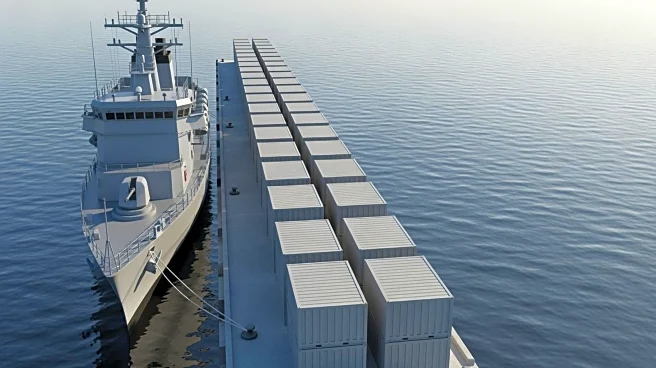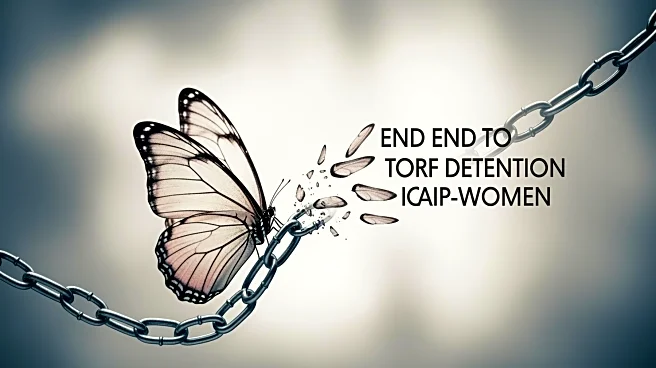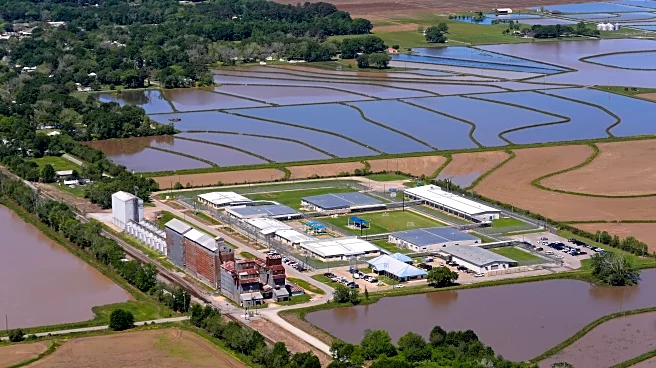What's Happening?
The Trump administration is leveraging the US Navy to expedite the construction of a network of migrant detention centers across the United States. The Department of Homeland Security (DHS) is channeling
$10 billion through the Navy to facilitate this initiative, aiming to build facilities that can house up to 10,000 migrants each. These centers are expected to be constructed in states such as Louisiana, Georgia, Pennsylvania, Indiana, Utah, and Kansas. The effort is part of a broader strategy to increase immigration enforcement and arrest a record number of migrants. The Navy's Supply Systems Command is acting as the contracting arm to hire companies for the construction and maintenance of these facilities, which are likely to be primarily soft-sided tents. This move follows ICE's recent acquisition of $45 billion from Congress to expand detention capacity, including a facility at Fort Bliss Army base in Texas.
Why It's Important?
The rapid expansion of migrant detention centers underscores the Trump administration's commitment to intensifying immigration enforcement. By involving the US Navy, the administration aims to overcome delays typically associated with federal contracting processes, thereby accelerating the construction of these facilities. This development could significantly impact immigration policy and enforcement in the US, potentially leading to increased deportations and affecting migrant communities. The initiative also highlights the administration's reliance on military resources to support domestic law enforcement missions, raising questions about the role of the military in civilian affairs. The expansion of detention capacity may also influence public opinion and political discourse surrounding immigration policy.
What's Next?
The construction of these detention centers is set to begin soon, with the contracting process still ongoing. As the facilities are built, there may be increased scrutiny from civil rights groups and political leaders regarding the conditions and standards of these centers. The administration's approach could face legal challenges, particularly concerning the use of military resources for domestic law enforcement. Additionally, the expansion may prompt further debate on immigration policy and the treatment of migrants in the US. Stakeholders, including lawmakers and advocacy groups, are likely to respond to these developments, potentially influencing future policy decisions.
Beyond the Headlines
The use of military resources for constructing migrant detention centers raises ethical and legal questions about the militarization of immigration enforcement. This approach may set a precedent for future administrations, potentially altering the balance between civilian and military roles in domestic affairs. The initiative could also impact the perception of the US immigration system internationally, affecting diplomatic relations and the country's image as a destination for migrants. Long-term implications may include shifts in public policy and societal attitudes towards immigration and the role of the military in civilian governance.














